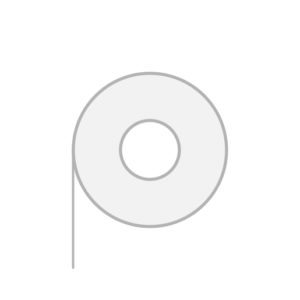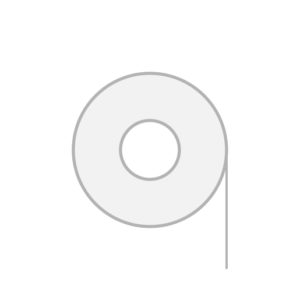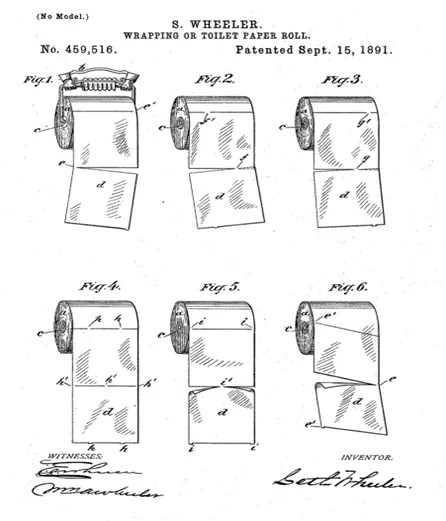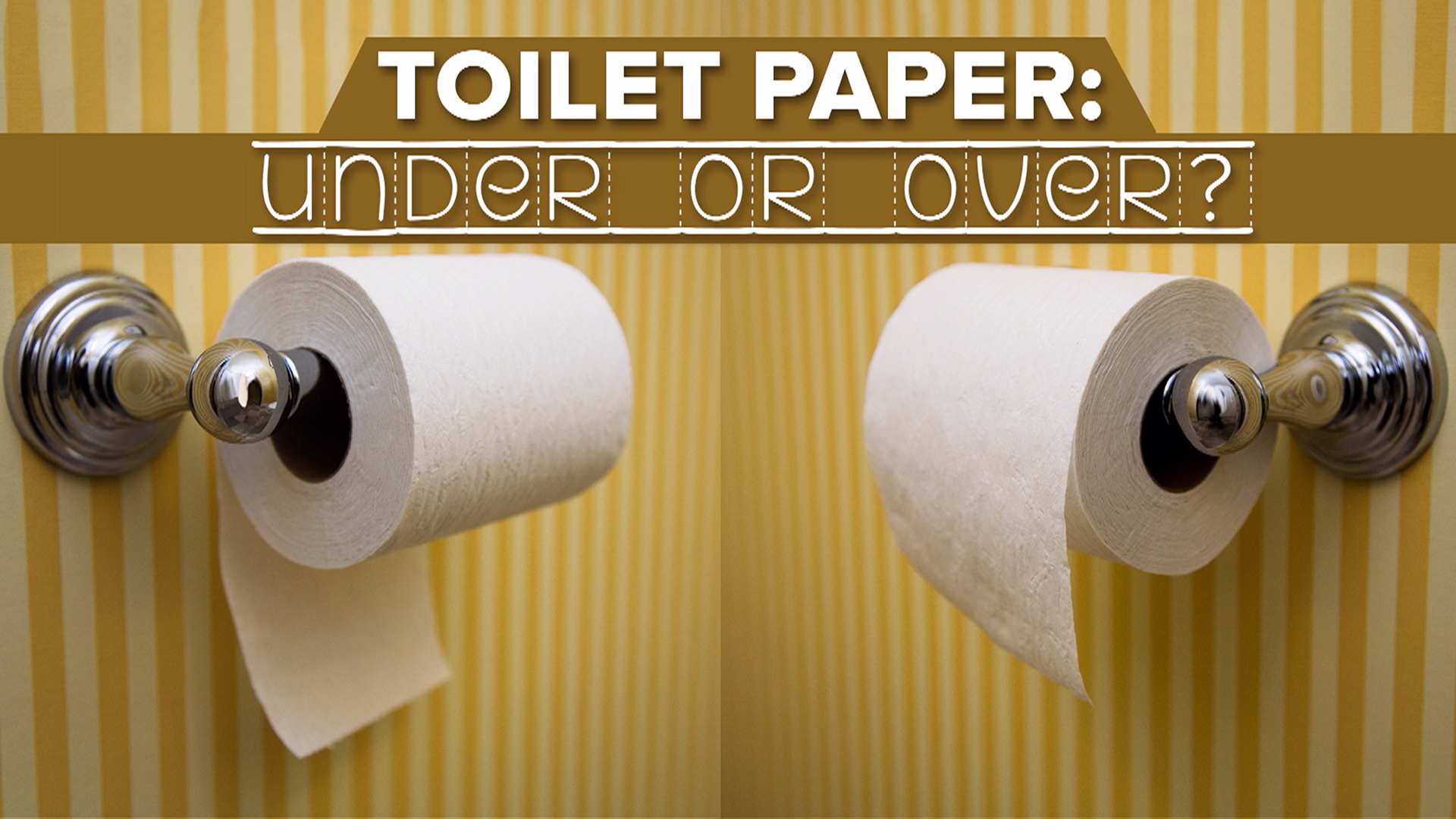Who’s right?
Toilet paper is by now an object taken for granted, and we often use it involuntarily, but the positioning of the paper in the holder is not obvious to all. There are different opinions about that: some people think it is right to be in the ‘over’ position, whereas others are in the ‘under’ position.
Differences
Despite looking like a small-time issue, some differences have been listed:

OVER: the paper doesn’t hit the wall, resulting in being more hygienic; it’s easier to find and grasp the loose end; the loose end is easier to fold, especially in hotels to show the room has been cleaned; it’s easier to see the brand or the pattern of the paper.
UNDER: the paper looks tidier because the loose end is more hidden; it’s harder for house pets or toddlers to unroll the paper; a recreational vehicle may reduce unrolling during driving (Wikipedia).
Wheeler’s patent
Luckily, some pictures give us a hint of how the original positioning was. They are from the original patent of the paper roll invented by Zeth Wheeler in 1871 (Google patents). The pictures show that the right position is ‘over’. Despite the patent for the roll, Mr. Wheeler is not the original inventor of toilet paper. For that, we need to go back to 1857, the year when Joseph C. Gayetty sold the first toilet paper in flat sheets.

Today, toilet paper is still the same as what Wheeler invented, but with some other characteristics: more layers, different paper structures, sometimes scented, sometimes colored. In a way, fantasy and creativity have not backed out, nor in front of such an intimate and taboo product.
We cannot say the same thing for a country like Japan, where toilet paper is an unnecessary accessory because the technology of the toilets has advanced so much that all you need to clean yourself is part of the toilet.
Toilet paper is an everyday object we often use without much thought, yet the seemingly simple question of how to position it in the holder sparks surprising debate. Should the paper hang over the front of the roll, or should it come from underneath? This minor household decision has divided opinions more than you might expect.

Practical solutions
For households divided on the issue, practical compromises exist:
- Installing dual holders with papers in both orientations
- Using multi-orientable holders that allow for either position
The hygiene factor
Recent research adds weight to the “over” position argument. A University of Colorado study examined 12 public restrooms (six men’s and six women’s) and identified 19 bacterial groups on various bathroom surfaces, including doors, floors, faucets, soap dispensers, and toilets.
Many bacteria found in restrooms, particularly E. coli from human feces, can easily transfer from surfaces to hands and potentially contaminate food.
The critical moment for bacterial transfer occurs when reaching for toilet paper. With the “over” position, users’ fingers contact only the paper they’ll use and subsequently flush. The “under” position often results in wall contact, leaving bacterial deposits that can transfer to subsequent users.
Furthermore, the “under” position makes it more difficult to use toilet paper as a barrier when touching other bathroom surfaces like toilet seats, flush handles, or stall locks.
Proper handwashing—scrubbing with soap for at least 20 seconds—is essential but often poorly executed. Most people’s quick rinse is insufficient to remove bacteria effectively.

